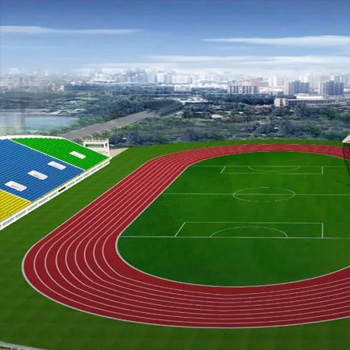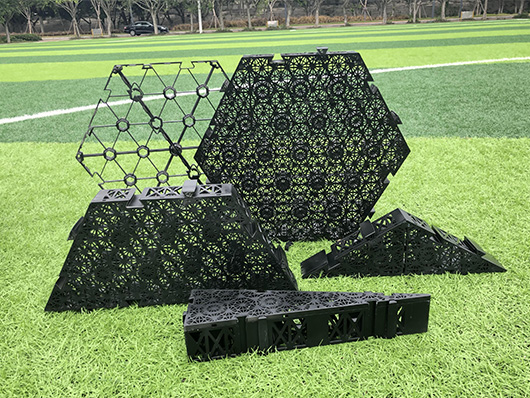Foundation Application
Low Impact Development (LID) Geocellular Subbase Replacement System
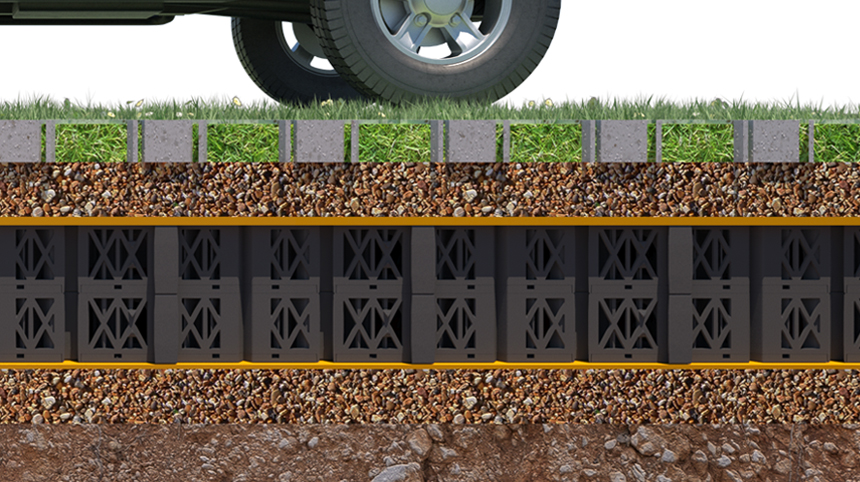
Features of the LID Sub-base Replacement System
- Rapid Drainage;
- Water Infiltration
- Water Replenishment;
- Cooling;
- Noise reduction;
- Purification;
- Pipe replacement;
- Keep ground flat;
The Low Impact Development (LID) Geocellular Sub-base Replacement System can replace a variety of traditional granular gradients in the bottom layer below the surface of the ground:
- It is used in a wide range of applications, from permeable pavement to concrete pavement, and from pavement to highways;
- The void ratio is 95%, which greatly increases the attenuation capacity of surface rainwater and reduces the requirement for bottom aggregates;
- Rainwater infiltration is on-the-spot. The base of the base can be reinforced, and thus the system can make the ground smooth and not prone to subsidence;
- Only 35 cm was excavated, greatly saving construction costs and shortening construction time;
- It can be used in a wide range of places: roads, squares, stadiums, garage roofs, parking lots and racecourses.
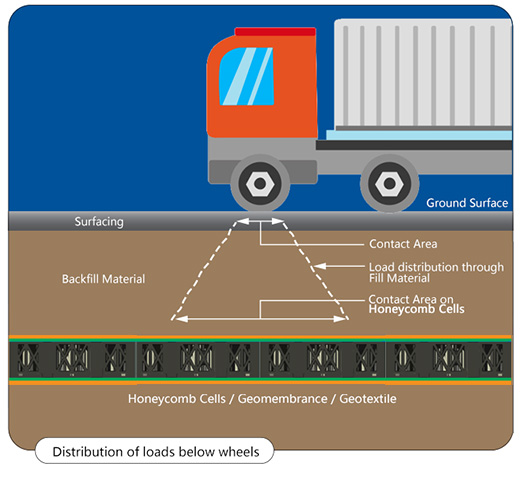
Thanks to the ultra-high load performance (130 t/m 2), the traffic load can be safely and reliably transferred to the road bed. Equipped with ultra-shallow cladding, the huge cost of transporting and laying basement stone is no longer required, which prevents basement contamination and effectively avoids excessive water levels.
The ultra-shallow profile minimizes the excavation cost. At the same time, it reduces stormwater runoff to meet the BMP goal of the stormwater assessment system.
Geocellular Sub-base replacement systems can withstand heavy traffic loads over a long period of time, so they can replace traditional gravel bases to increase road safety and functionality. When the soil quality of the roadbed is poor, the LID sub-base replacement system can help to disperse the traffic load without complicating the problem by increasing the fixed load on the foundation. When the soil quality of the roadbed is good, sub-base replacement systems can be installed under a conventional impermeable road surface to achieve a permeable effect and increase the permeable area to the greatest extent. For almost all roadbeds, the system can transform a traditional base into a massive stormwater management tool capable of delivering and storing water.
Application of the LID Sub-base Replacement System
Empowering Infrastructure: HOENSOEY CELLS in Heavy-Duty Load Bearing
Our innovative drainage solution demonstrates remarkable versatility and robustness when it comes to heavy-duty applications. This system can be successfully utilized as a superior alternative to traditional Sub-base Replacement Systems. With its innovative design and high-strength materials, it can withstand significant loads, even those exerted by heavy-duty vehicles such as fire trucks.
The load-bearing ability of this system is second to none, ensuring maximum performance in challenging conditions. Moreover, it offers cost-effectiveness and environmental benefits by reducing the amount of aggregate material required, thus lessening the environmental impact.
As a result, our product, HOENSOEY CELLS, is becoming the preferred choice for various heavy-duty infrastructural applications, delivering a perfect blend of reliability, resilience, and efficiency. It's indeed an exemplary embodiment of modern engineering solutions that meet and exceed the demands of today's infrastructure needs.
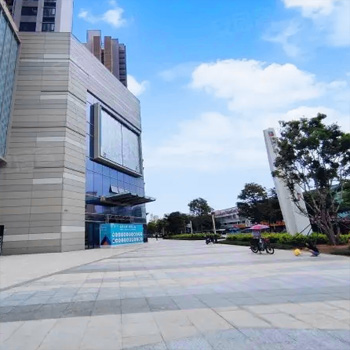
Square
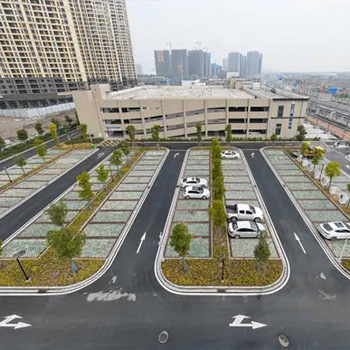
Parking lot
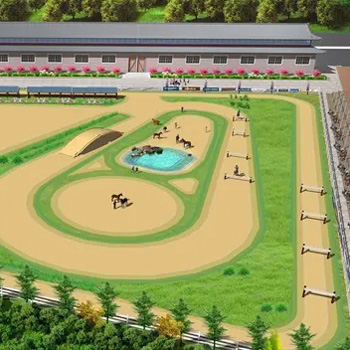
Racecourse
Function and essential requirements of the base layer in asphalt pavement
The base layer has the following main functions:
1. Bear the traffic load; As the main load-bearing layer of the road and the surface layer, it transmits the load of the wheel to the lower structure.
2. Increase the overall strength of the road and the fatigue resistance of the surface layer; Preventing or reducing the appearance of cracks in the surface layer.
3. Alleviate the adverse effects of uneven frost heave or uneven volume deformation of soil foundation to the surface layer.
4. Provide stable driving surface and working surface for construction machinery of surface layer.
Basic requirements for the base layer are:
1. It should have sufficient strength and rigidity.
2. It should have sufficient water stability and frost resistance (frozen areas).
3. It should have sufficient flatness.
4. The base layer should be well combined with the surface layer.
Function and basic requirements for cement and concrete pavement bases
Main function:
1. It serves as a continuous and evenly supported elastic foundation, so road surface will remain flat. The pavement greatly diffuses the load through the thicker rigid pavement, so that the load spread over the base is small. The pavement material, however, is brittle. It has poor deformability and relatively low flexural tensile strength.
2. The water stability of the base layer is good (good water permeability). There are many vertical and horizontal joints in the pavement. As the material of the joint ages and begins to shed, surface water can easily infiltrate.
Basic requirements:
1. A certain amount of strength and stiffness;
2. Sufficient water stability and water permeability (freeze resistance is also required in frozen areas);
3. Sufficient flatness, uniform thickness of paving slab;
4. Sufficient thickness and width.
In summary, HOENSOEY Cells can completely replace conventional sub-base layers of road surfaces.
HOENSOEY Cell is a new type of rainwater storage honeycomb units with ultra-high compression strength and unique buckles. It is a core component in shallow surface water treatment systems.

